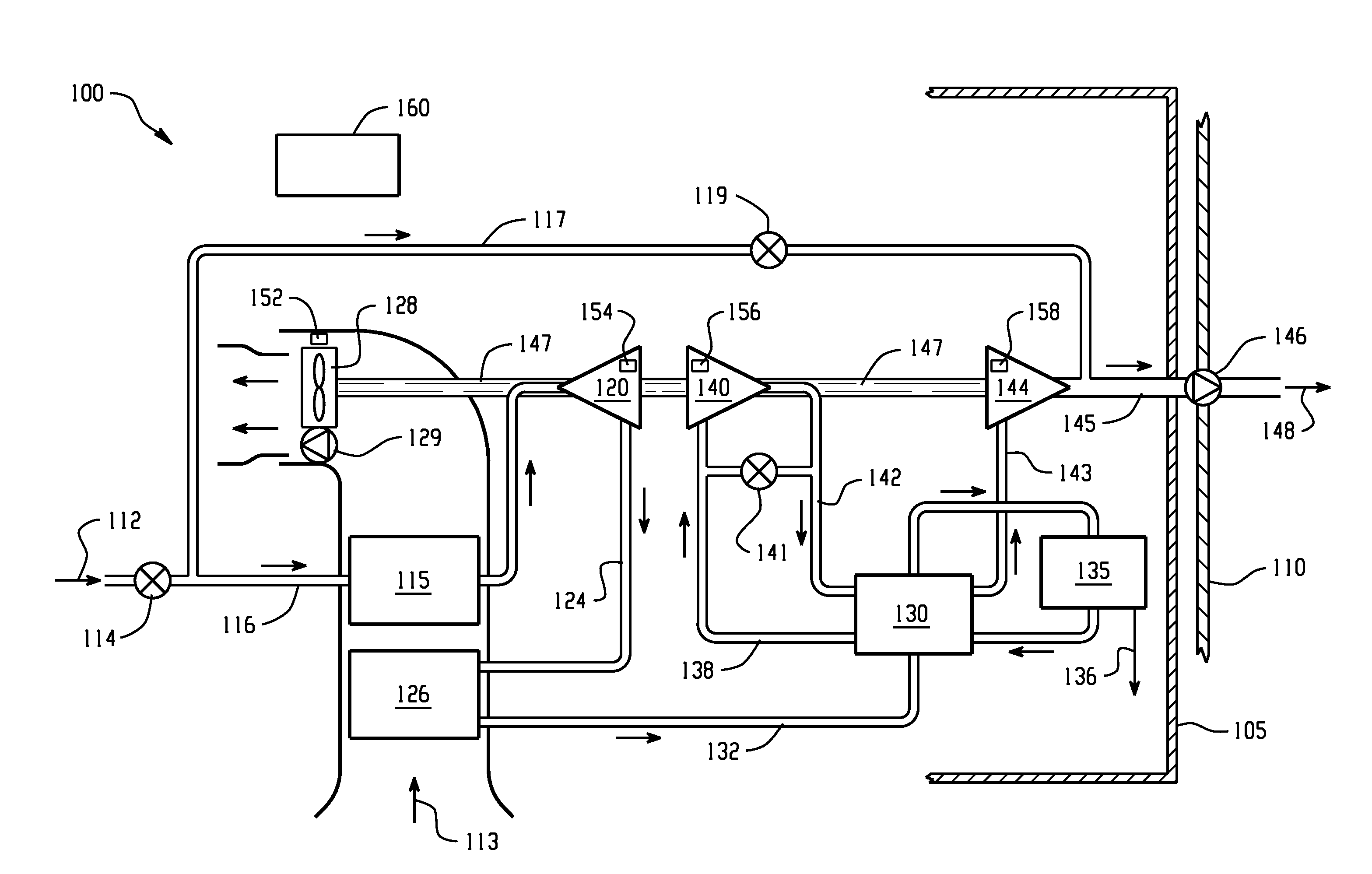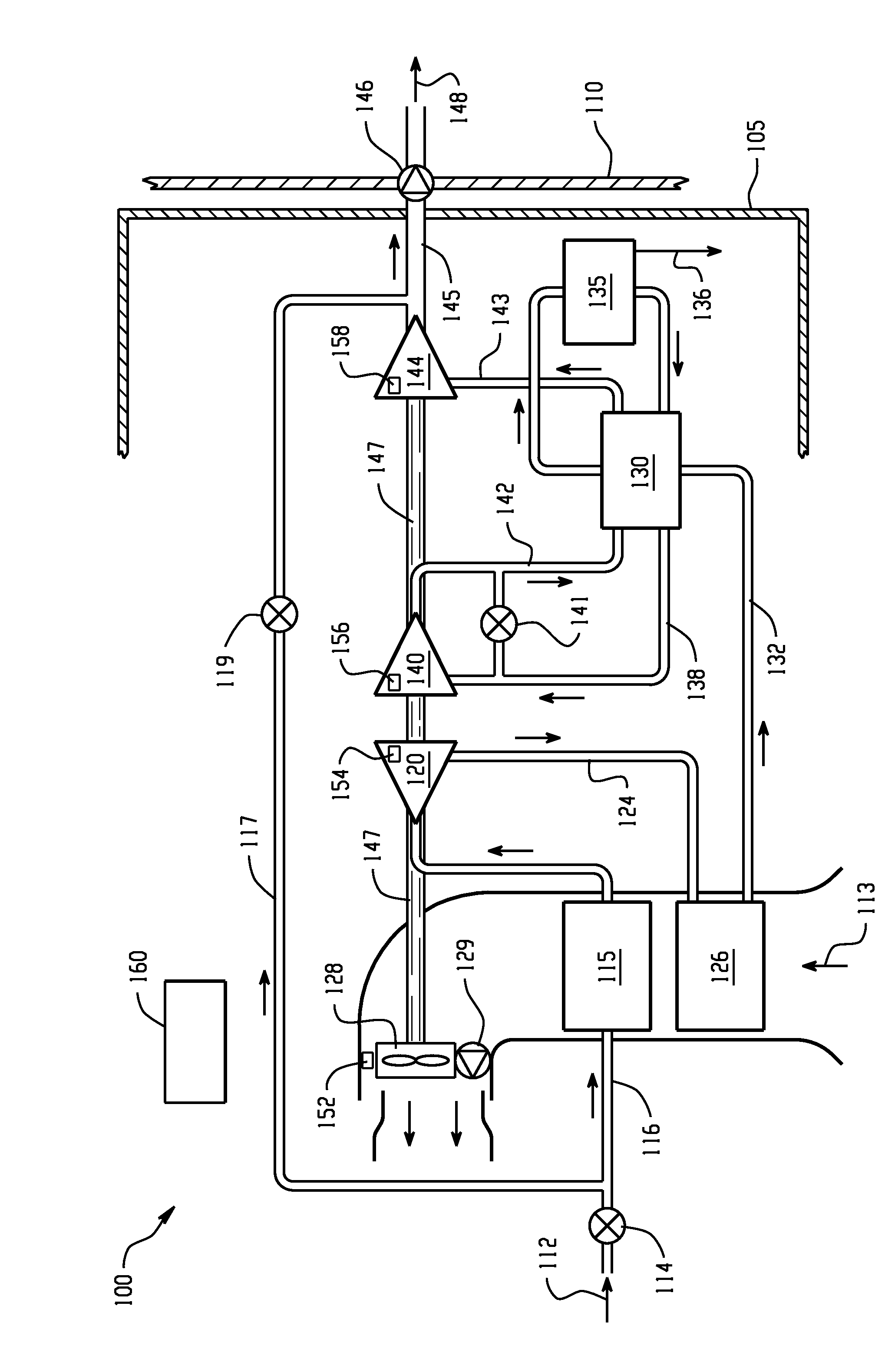Aircraft environmental conditioning system and method
a technology for environmental conditioning and air conditioners, applied in the direction of domestic cooling devices, energy-efficient board measures, lighting and heating devices, etc., can solve the problems of reducing cooling performance, fan blade breakage, and particulate debris accumulation on and around the heat absorption sid
- Summary
- Abstract
- Description
- Claims
- Application Information
AI Technical Summary
Benefits of technology
Problems solved by technology
Method used
Image
Examples
Embodiment Construction
[0008]With reference to the FIGURE, the FIGURE schematically depicts an exemplary environmental air conditioning system 100 for an aircraft. The environmental air conditioning system 100 is inside housing 105 (only a portion of housing 105 is shown) disposed in an unpressurized area of an aircraft, separated from a pressurized area by bulkhead 110. As shown in the FIGURE, compressed air 112 from a compressed air source (not shown) such as a turbine engine bleed, an APU bleed, or an electrically-powered compressor is delivered through control valve 114 and conduit 116 to heat exchanger 115 (also referred to in the art as a primary heat exchanger) where it rejects heat to ambient air flowing through or across a heat absorption side of heat exchanger 115. Cooled compressed air is discharged from heat exchanger 115 to compressor 120. A portion of the air going to heat exchanger 115 can be controllably diverted through conduit 117 and control / expansion valve 119 to mix with the outlet of...
PUM
 Login to View More
Login to View More Abstract
Description
Claims
Application Information
 Login to View More
Login to View More - R&D
- Intellectual Property
- Life Sciences
- Materials
- Tech Scout
- Unparalleled Data Quality
- Higher Quality Content
- 60% Fewer Hallucinations
Browse by: Latest US Patents, China's latest patents, Technical Efficacy Thesaurus, Application Domain, Technology Topic, Popular Technical Reports.
© 2025 PatSnap. All rights reserved.Legal|Privacy policy|Modern Slavery Act Transparency Statement|Sitemap|About US| Contact US: help@patsnap.com


